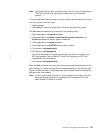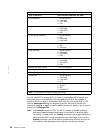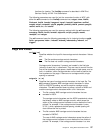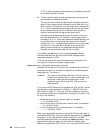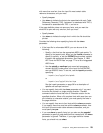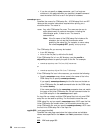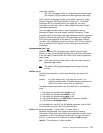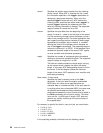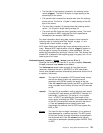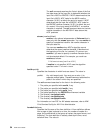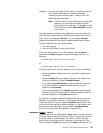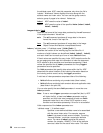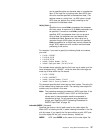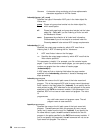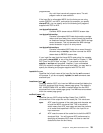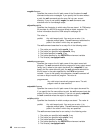
The first field in the example is located in the indexing anchor
record (trigger1). The field is 20 bytes in length starting at the
second byte of the record.
The second field is located five records down from the indexing
anchor record. The field is 10 bytes in length starting at the fifth
byte of the record.
The third field is located 15 records before the indexing anchor
record. It is 5 bytes in length starting at byte 30.
The fourth and fifth fields are literal (constant) values. The fourth
field is specified in ASCII, while the fifth field is specified as
hexadecimal (for example, EBCDIC) data.
For more information about using data values or literal values for
indexing, refer to “Indexing with Data Values” on page 11, and
“Indexing with Literal Values” on page 12.
ACIF allows fields to be defined but never referenced as part of an
index. Because ACIF requires either a field or trigger to appear on
the first page of a group (for example, a bank statement), you can
satisfy this requirement by defining a “dummy” field. This dummy field
allows ACIF to determine the beginning page of a group, but it is not
used as part of an index.
fileformat={record | record,
n
| stream | stream,
(newline=
X'nn')}
Specifies the format of the input file. If you do not specify fileformat,
the acif command uses stream as the default.
The fileformat parameter does not apply to input files that are
resources. Resource files are in MO:DCA-P or AFP data stream
format, and the acif command automatically determines that the file is
a resource. Values are:
record The input file is formatted in S/370 record format, where
the first two bytes of each line, called the record
descriptor word (RDW), specify the length of the line.
Files with record format typically are MVS or VM files that
have a variable record format, and that are NFS-mounted
to AIX.
record,
n
The input file is formatted in such a way that each record
(including AFP data stream and MO:DCA-P records) is a
fixed length,
n
bytes long. The value of
n
is a number
from 1 to 32767, and specifies the fixed length of the
entire record, excluding the RDW. The encapsulated size
of the AFP structured field must be less than the size of
n
. Files with record,
n
format typically come with
fixed-length file attributes from a S/370 host system like
MVS or VM.
stream The input file has no length information; it is a stream of
data separated by a newline character. The AFP portion
of the input file has its length information encapsulated in
the structured field. Files with stream format typically
come from a workstation operating system like AIX, OS/2,
or DOS.
Chapter 2. Using ACIF Parameters in AIX 33



